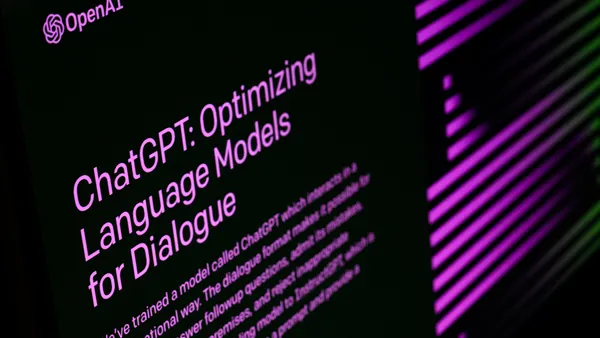All at once the term “quiet quitting” is all over the media, with major outlets declaring it the newest workplace trend. One can be forgiven for believing that an entire generation of employees are doing the bare minimum to collect a paycheck while they look for another job they may like better. How accurate is this growing perception?
It’s just one of the many questions that organizations want answered and for good reason. In the face of an epic labor shortage, organizations have a huge incentive to keep employees with a company and ensure they’re highly engaged.
There are many ways that HR professionals can help because they have access to a range of data that, when layered with other datasets, can answer key questions, such as who is at risk and what strategies can be deployed in order to create higher engagement in more inclusive environments.
Higher Expectations
The collective experience of the past few years has left a lasting imprint on all workers and has fundamentally changed how we define the role of work in our lives. HR professionals, in particular, have been impacted by this evolution in expectations. And it’s not just better life-work balances, employees now have much higher expectations for accessibility, privacy and inclusion – and it falls to the HR professional to assess whether the work environment meets those demands.
More employees are working remotely post-pandemic. Across the globe, 16% of companies are fully remote and many more are going into the office on a part-time basis. Fortunately, tools such as Microsoft Teams, Slack and Zoom provide digital bridges, allowing employees to connect, workshop and collaborate wherever they are. Gartner predicts that spending on this digital infrastructure will exceed $15 billion by 2024.
These trends raise expectations on the part of the employee. If an employee works remotely at least some of the time, will he or she have equal access to company announcements, initiatives and culture? Are remote employees even logging into the company intranet to learn about these initiatives?
Workplace tools are ringing alarm bells for some employees. What is being tracked? And do the metrics accurately reflect productivity? Put another way, if time spent logged into Slack is a measure of productivity, is the employee who exits the platform in order to concentrate on a project in Excel or CAD/CAM flagged in some way? Employees reasonably want transparency in how tools that allow for tracking are being used and for what purpose.
All of these questions are urgent and require data-driven answers so that organizations can focus resources on solving the challenges facing their employees. Fortunately, HR data can go a long way in shedding insight into the overall health of an organization’s workforce, especially when it is blended with other data sources.
The Hidden Potential of HR Data
HR data is highly private and sensitive, but it can be anonymized and used in the aggregate to address a problem statement, such as: Why do younger generations or newly hired employees have a higher churn rate?
You can then probe the workplace tools for answers. For instance, if you use Microsoft Viva Insights, you may realize that these employees are invited to a higher than average ad hoc Microsoft Teams calls, which take a lot of time out of their day. If that’s the case, you can opt to establish rules around when it’s acceptable to schedule an ad hoc meeting and when it’s not.
Or, you may see that the networks of these newer or remote employers are still small, which in turn, may mean they don’t feel a part of the corporate culture. An initiative to help grow these employees’ networks will help the employee feel the kind of kinship they need to stay with the company.
Other HR data sources can answer other strategic questions. By blending data, such as department, level, maternity or long-term sick leave, with other sources provides insight into employee satisfaction, use of resources and resource gap analysis.
Recently my company helped a client understand why some employees don’t sign into the Intranet for extended periods of time. As a company with hundreds of thousands of workers, at any given time hundreds, if not thousands, of employees will be out on maternity or long-term sick leave and aren’t expected to log into the Intranet.
We blended maternity leave and long-term sick leave data with web activity from Adobe and SharePoint data to create a new audience segment called “long-term returners.” This was essentially an audience of employees who hadn’t signed in to the company Intranet in the past six weeks. Creating this audience segment enabled the company to address a lot of challenges. For instance, if critical benefit information has been distributed that all employees must sign, regardless of their sick-leave or maternity status, the communications teams know who to prompt to sign in to access that information. It also helped to identify employees who have disengaged from the communications or culture so that they can be treated differently.
By simply tracking two HR data sources together based on behaviors and characteristics, content writers and communications managers can understand the drivers behind specific behaviors, whilst also making sure that the communications and overall employee experience is as inclusive as possible.
This precise use of data-blending is, of course, something that we advise all clients to do fairly, transparently, and sustainably – we are not advocates of "use the data now and beg for forgiveness later." Transparency is a fundamental step when using these data points and must be communicated to employees with data handbooks or clear company communications.
Given some of the sensitivities that surround employee data, organizations may want to partner with someone who is familiar with the issues and can help them conduct the research in a sensitive way. The goal, after all, is to create better, more connected environments for your employees so they want to stay and be more productive, and to leave all productivity issues between employees and their managers.
Paris is Associate Director of Analytics & Insights at Rightpoint. A seasoned analyst, she believes that ethical data use is the foundation of every future workplace.










